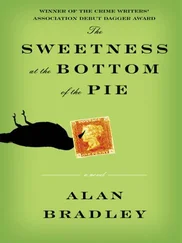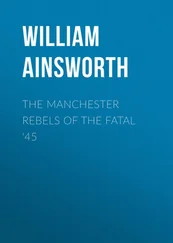Just three days later, the Mitsubishi van reappeared beside Purba’s paddy. The family had used up all the ingredients. They wanted Purba to return to the hospital and personally repeat the ritual. He again acceded to the request.
None of the staff at Adam Malik hospital ever objected to either of the late-night rituals or cautioned Purba that he might be exposing himself to a killer disease. No one suggested he take Tamiflu. No one sampled his blood or monitored his health. But had they tried, Purba would have considered it silly. He knew for a fact the source of the illness striking Jones and his family, and it certainly was not bird flu.
“I know the truth because I speak to the spirits,” the witch doctor told me as we chatted on a wood bench in a thatched shelter on the village outskirts. “I know that Jones’s father made a deal with another, black-magic witch doctor. Both of them have died. But I can communicate with the spirits, so I know what happened.” According to Purba’s detailed account, Jones’s father, Ponten, had petitioned a witch doctor in the Alas River valley to help him become rich and powerful by conjuring the spirit of Begu Ganjang. The witch doctor had obliged. But Ponten never rewarded the witch doctor as promised. “The father broke his vow,” he continued. “Now the family has to pay. Now the whole family has to die.”
But Purba added that he had been able to shift the course of fate. He alone had been able to stay the execution of the remaining family members. “I’m the one to save Jones,” he said. He grinned, baring a mouthful of teeth stained black by decades of betel nut. “There will be no more casualties. Seven is enough. I drew a border around them at the hospital.” Purba stood up to demonstrate and etched a line in the dirt with the tip of his flip-flop. “It stops here,” he assured me, “because I protected the family with my magic line.”
Jones was discharged from Adam Malik Hospital ten weeks after he had been admitted. It had been a long, torturous stay. Besides losing weight and developing brain abscesses, he suffered what doctors reported was permanent lung damage. He had also become exceedingly bored during his convalescence. As his strength returned, he had begun to wander, repeatedly slipping out of the infectious disease ward for a coffee in the hospital’s small cafeteria, potentially putting other patients and staff at risk.
“I never expected to come home,” Jones recalled when I met him less than a week after he was discharged. “It was too long in the hospital. I lost hope.” He was still taking medicine, and the doctors had instructed him to come to the hospital for a checkup every week for the next six months. So he, his wife, and their two sons had returned to the crowded, working-class neighborhood near the airport and temporarily moved in with an aunt. Jones would spend much of his time sleeping on a thin woven mat on the floor, which was where I found him when I first came to visit. He gradually roused himself and sat up on the mat. But his gaze remained vacant. Only when I asked about his plans did he smile. “I want to go back to farming, back to my orchards and grow oranges,” he said softly.
Jones was now the head of the Ginting family, the sole surviving son. But he did not know that. No one had yet had the heart to tell him that during his own long recovery, his older brother Dowes had died.
Throughout the Ginting family’s ordeal, senior Indonesian officials dismissed any possibility that the virus had been passed from one person to another. They were afraid the world might conclude this was the start of an epidemic and isolate Indonesia, crippling tourism, staggering the economy, and inciting panic. Health Minister Siti Fadilah Supari later boasted about how she’d convinced her president, Susilo Bambang Yudhoyono, that CNN reports about human transmission of the virus in Sumatra were lies. “From the lessening of the tension in his face, I knew that he trusted me,” she later wrote. Supari would continue to maintain over the coming years there had been no human spread, at times accusing those who disagreed of trying to sabotage Indonesia.
But WHO’s flu specialists were quickly convinced that nearly all the stricken family members had actually caught the disease from one another. Most had fallen sick so long after the eldest sister, Puji, that it was highly improbable they had caught it from the same source as she. More likely, Puji had infected them.
Dowes, however, could not have caught the bug from Puji. He had taken ill too long after the others. If Dowes had the virus, he had caught it while caring for his son, who had caught it from Puji. That would be an ominous precedent, marking the first time the virus had been found to hop from one person to another and onto a third. But until samples from Dowes tested positive for the strain, this would only be speculation. There were no hospital specimens for him, unlike for most of his relatives. There were just the samples that Tim Uyeki and his colleagues collected when they located Dowes on the hilltop in Jandi Meriah.
Before leaving the man’s bedside, Uyeki had taken the tubes and wrapped them with a cold pack in double plastic bags, which he then put in his backpack for the return trip to Kabanjahe. There, on a cement landing just outside the district office, he repackaged the samples. He made sure the vials were closed tightly and relabeled them so it was clear for the laboratory what they contained. He placed them, along with new cold packs, into a plastic bag, which he put inside another bag and then inside another. A provincial health officer drove this hazardous delivery out of the mountains, back to Medan, where a waiting WHO official carried them on to an evening flight to Jakarta. It was about 11:00 P.M. when this official arrived by taxi at Indonesia’s national health laboratory. The samples were split up, half to be tested by Indonesians and half at a U.S. Navy lab in the capital. The scientists worked through the night.
That evening, a senior WHO official in Jakarta e-mailed the agency’s regional headquarters in New Delhi reporting on Uyeki’s success in finding the fugitive, Dowes, and obtaining the samples. The outcome of the tests would be crucial. “If he turns out to be positive, then we will have to consider going in for rapid containment measures,” the official wrote. These would involve an intensified investigation, widespread distribution of Tamiflu, and possibly, for the first time, a mandatory quarantine of the affected villages.
His missive received an urgent rebuttal. It came not from the regional office but from the top, from the chief of the global influenza program at WHO’s main headquarters in Geneva. “In response to the possibility of a rapid response raised in the e-mail, my sense from various communications is that the level of suspicion and hostility in the area is high. Trying to mount a rapid response, especially one involving many outsiders and oseltamivir coupled with quarantine and isolation, seems most likely to lead to a very bad outcome, especially in terms of more suspicion and hostility and rumors,” wrote Dr. Keiji Fukuda, the global influenza chief. Only if the virus spread beyond the Ginting family should a rapid response be considered, he said. Fukuda was not optimistic about its prospects even then. “If intense social mobilization doesn’t quickly reverse the population’s suspicion,” he added, “we would probably have to contemplate a heavy security force/military backed operation which is, I suspect, very unappealing to us all.”
Uyeki had come down for breakfast at his modest hotel in the Sumatran highlands when, at 7:00 A.M., he got a call on his cell phone. Both labs had results. The specimens had indeed tested positive for the virus.
Fifteen minutes later came a second call. Dowes was dead. His body had just arrived at Kabanjahe Hospital, and people there were reportedly in panic. Uyeki was worried they’d blame him for the death since he’d worked on Dowes only hours earlier. “OK,” Uyeki responded, “we’re on our way.”
Читать дальше











